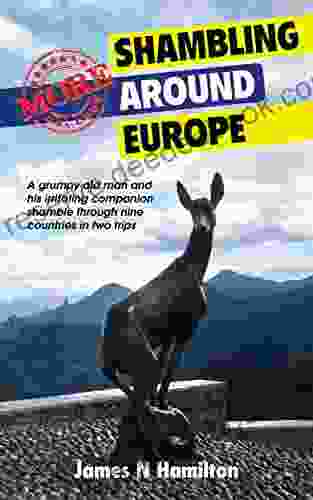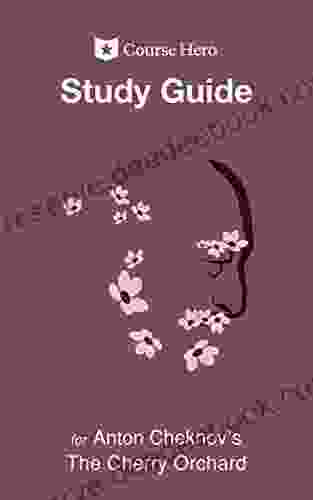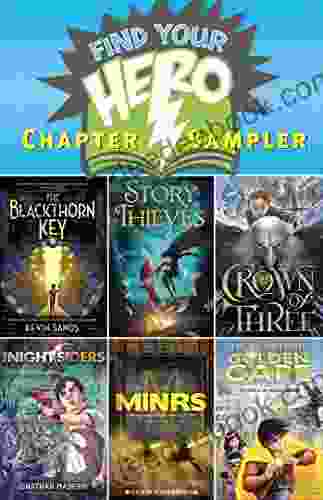The Cherry Orchard: A Comprehensive Study Guide for Course Hero

4.2 out of 5
| Language | : | English |
| File size | : | 787 KB |
| Print length | : | 384 pages |
| Lending | : | Enabled |
| Screen Reader | : | Supported |
Welcome to our in-depth study guide for Anton Chekhov's masterpiece, "The Cherry Orchard." This guide is designed to provide you with a comprehensive understanding of the play, its characters, themes, and literary devices. Whether you're a student preparing for a course exam or a passionate theater enthusiast seeking deeper insights, this guide will serve as an invaluable resource.
Plot Summary and Historical Context
Set in rural Russia in the early 20th century, "The Cherry Orchard" follows the Ranevsky family as they face the impending loss of their ancestral estate, the Cherry Orchard. The family, led by the widowed Lyubov Ranevsky, has fallen upon hard times and is heavily in debt. The estate is set to be auctioned off to pay their creditors.
The play delves into the social and economic changes taking place in Russia at the time. The old aristocratic order, represented by the Ranevskys, is fading away, while new capitalist forces, embodied by the businessman Lopakhin, are on the rise. This clash between the past and the present creates a backdrop of tension and uncertainty.
Character Analysis
Lyubov Ranevsky: The central figure of the play, Lyubov is a charming and extravagant woman who has lived beyond her means. Despite her reckless spending, she is deeply attached to the Cherry Orchard, which represents her childhood and the past. Lyubov's character embodies the fading aristocracy and their inability to adapt to the changing world.
Lopakhin: A wealthy businessman, Lopakhin is a self-made man who represents the new economic order. He is practical and ambitious, and he sees the Cherry Orchard as a lucrative investment. Lopakhin's character exposes the flaws of the aristocracy and the inevitability of change.
Petya Trofimov: A radical student, Trofimov is a passionate advocate for social justice. He despises the old aristocracy and believes in a future where equality and fairness prevail. Trofimov's character represents the hopes and dreams of the younger generation.
Themes and Literary Devices
Social Commentary and Class Struggles: "The Cherry Orchard" is a sharp critique of the social and economic inequalities in Russian society. Chekhov juxtaposes the wealthy aristocracy, who are out of touch with reality, with the lower classes, who are struggling to survive. Through the characters of Lopakhin and Trofimov, the play explores the tensions between the old and new social orders.
Symbolism: The Cherry Orchard itself is a powerful symbol that represents different things to different characters. For Lyubov, it is a symbol of her past and her family's legacy. For Lopakhin, it is a symbol of wealth and opportunity. For Trofimov, it is a symbol of the need for social change. The play's use of symbolism adds depth and complexity to its themes.
Foreshadowing and Irony: Chekhov masterfully uses foreshadowing and irony to create suspense and heighten the play's emotional impact. Throughout the play, there are subtle hints and ironies that foreshadow the tragic fate of the Cherry Orchard and its inhabitants.
Significance and Legacy
"The Cherry Orchard" is widely regarded as one of the greatest plays ever written. It is a masterpiece of Russian realism and a testament to Chekhov's profound understanding of human nature. The play has been translated into numerous languages and staged countless times around the world.
The play's themes and characters continue to resonate with audiences today, offering insights into the human condition and the social and economic forces that shape our lives. "The Cherry Orchard" is a timeless classic that will continue to be studied and enjoyed for generations to come.
4.2 out of 5
| Language | : | English |
| File size | : | 787 KB |
| Print length | : | 384 pages |
| Lending | : | Enabled |
| Screen Reader | : | Supported |
Do you want to contribute by writing guest posts on this blog?
Please contact us and send us a resume of previous articles that you have written.
 Book
Book Novel
Novel Page
Page Chapter
Chapter Library
Library Paperback
Paperback Magazine
Magazine Newspaper
Newspaper Sentence
Sentence Glossary
Glossary Bibliography
Bibliography Foreword
Foreword Preface
Preface Synopsis
Synopsis Footnote
Footnote Manuscript
Manuscript Scroll
Scroll Tome
Tome Classics
Classics Biography
Biography Reference
Reference Encyclopedia
Encyclopedia Dictionary
Dictionary Thesaurus
Thesaurus Narrator
Narrator Resolution
Resolution Librarian
Librarian Catalog
Catalog Card Catalog
Card Catalog Borrowing
Borrowing Archives
Archives Scholarly
Scholarly Lending
Lending Journals
Journals Rare Books
Rare Books Study Group
Study Group Thesis
Thesis Dissertation
Dissertation Book Club
Book Club Theory
Theory John Ct Miller
John Ct Miller Willow Williebee
Willow Williebee Roberts Avens
Roberts Avens Drew Hayes
Drew Hayes Bob Staake
Bob Staake Kathy De Cano
Kathy De Cano Thimira Amaratunga
Thimira Amaratunga Zoe Blake
Zoe Blake Dawn Iacobucci
Dawn Iacobucci Mike Devincent
Mike Devincent Umberto Michelucci
Umberto Michelucci Berthold Rzany
Berthold Rzany Denny Magic
Denny Magic Emma Dowling
Emma Dowling Joseph John Kohn
Joseph John Kohn Patrizio Kroyani
Patrizio Kroyani Norman Lewis
Norman Lewis Thomas Kuriakose
Thomas Kuriakose N Bruce Duthu
N Bruce Duthu Cesare Pavese
Cesare Pavese
Light bulbAdvertise smarter! Our strategic ad space ensures maximum exposure. Reserve your spot today!

 Harold BlairGrumpy Old Man and His Irritating Companion Shamble Through Nine Countries in...
Harold BlairGrumpy Old Man and His Irritating Companion Shamble Through Nine Countries in...
 Phil FosterWhy Can't I Get Over the Loss of My Dog? Understanding the Profound Grief of...
Phil FosterWhy Can't I Get Over the Loss of My Dog? Understanding the Profound Grief of... Junichiro TanizakiFollow ·7.7k
Junichiro TanizakiFollow ·7.7k Devon MitchellFollow ·3.9k
Devon MitchellFollow ·3.9k Tom HayesFollow ·7k
Tom HayesFollow ·7k Heath PowellFollow ·18.9k
Heath PowellFollow ·18.9k Terry PratchettFollow ·6.9k
Terry PratchettFollow ·6.9k Greg CoxFollow ·15.1k
Greg CoxFollow ·15.1k Al FosterFollow ·3.3k
Al FosterFollow ·3.3k Gabriel Garcia MarquezFollow ·12.3k
Gabriel Garcia MarquezFollow ·12.3k

 Barry Bryant
Barry BryantAn Immersive Exploration into the World of Big Note Sheet...
: Embarking on a Musical Odyssey The pursuit...

 Corey Green
Corey GreenPolitics And The Street In Democratic Athens
The streets of democratic Athens...

 Ian McEwan
Ian McEwanThe Extraordinary Life of Fifth Officer Harold Lowe: From...
Harold Godfrey Lowe (21...

 Zachary Cox
Zachary CoxDiscover Jay Town: A Place Where High Fives and Community...
Nestled amidst rolling hills and...

 Oscar Wilde
Oscar WildeThe Kishangarh School Of Indian Art: True Sense And...
Amidst the diverse tapestry of Indian art,...

 Michael Simmons
Michael SimmonsCuban Flute Style Interpretation and Improvisation: A...
The Cuban flute style is a...
4.2 out of 5
| Language | : | English |
| File size | : | 787 KB |
| Print length | : | 384 pages |
| Lending | : | Enabled |
| Screen Reader | : | Supported |








